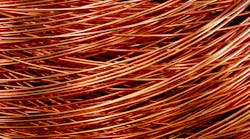As part of its ongoing effort to provide the industry with comprehensive copper building information, the Copper Development Association (CDA) has released two new free publications on its website: Recommended Practices for Designing and Installing Copper Building Wire Systems and Specialty Cables. These informational tools offer expert information on installing copper wire and using specialty cables to meet specific requirements or codes.
Recommended Practices for Designing and Installing Copper Building Wire Systems outlines design and installation practices for copper conductors that not only adhere to the National Electrical Code (NEC), but that also supplement and expand upon it to make such systems efficient, convenient, serviceable, expandable and safe. The publication covers different aspects involved in the installation and maintenance of copper building wire permanently installed in building wiring systems for residential, commercial, institutional, and industrial applications. Topics include Electrical System Cost and Efficiency, Fire-Resistive Cable Systems and Temperature Effects on Wiring Systems, among many others.
The Specialty Cables document recently released by the CDA discusses the benefits of using specialty cables when standard cables don’t meet the requirements of special applications. Mineral insulated and polymer insulated cables are recommended as two basic specialty cable types for special application. Mineral insulated cables use an inorganic insulation of magnesium oxide which makes the cable smokeless and highly effective due to the copper conductors and sheathing. Petrochemical facilities, commercial and industrial processing plants, and various transportation vehicles utilize polymer insulated cables because they are fire-resistant and maintain circuit integrity, leading to an increase in both safety and efficiency. The Specialty Cables guide will help designers and builders understand which facilities and applications require these specialty cables and which cable options should be used in these various applications.



